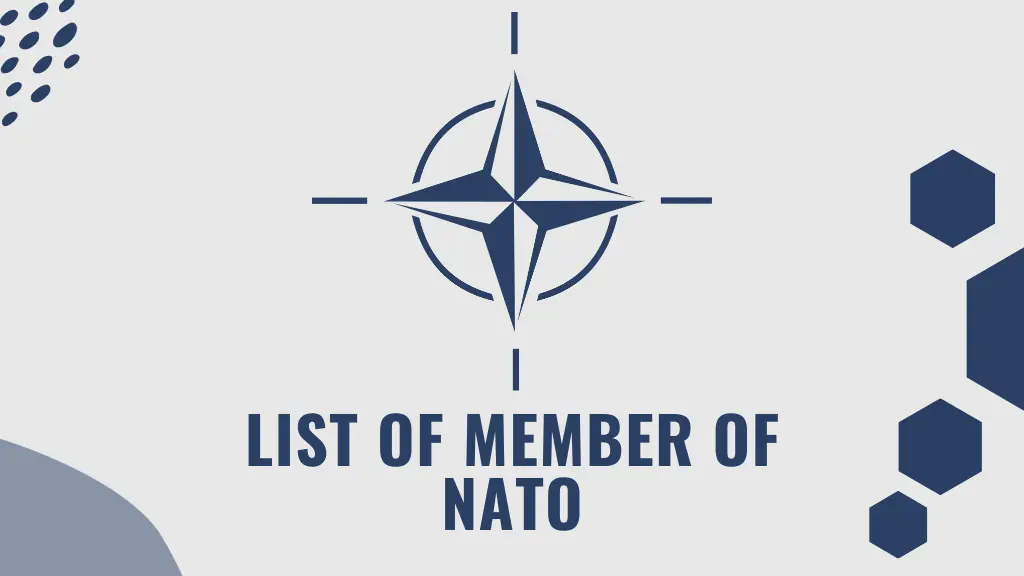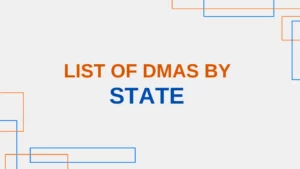In a rapidly changing world, international alliances play a pivotal role in maintaining peace and security. One such alliance that has been a cornerstone of global stability for over seven decades is the North Atlantic Treaty Organization, better known as NATO. In this article, we will explore the list of members of NATO.
A Comprehensive List of Members of NATO

Over the years, NATO has expanded its membership, reflecting the changing geopolitical landscape. Here is the list of List of Members of NATO:
Founding Members:
- United States of America
- Canada
- United Kingdom
- France
- Belgium
- Netherlands
- Luxembourg
- Norway
- Denmark
- Iceland
- Portugal
- Italy
Members Who Joined Later:
- Greece (joined in 1952)
- Turkey (joined in 1952)
- Germany (joined in 1955)
- Spain (joined in 1982)
- Poland (joined in 1999)
- Czech Republic (joined in 1999)
- Hungary (joined in 1999)
- Slovakia (joined in 2004)
- Slovenia (joined in 2004)
- Estonia (joined in 2004)
- Latvia (joined in 2004)
- Lithuania (joined in 2004)
- Bulgaria (joined in 2004)
- Romania (joined in 2004)
- Croatia (joined in 2009)
- Albania (joined in 2009)
- Montenegro (joined in 2017)
- North Macedonia (joined in 2020)
- Bosnia and Herzegovina (joined in 2020)
- Serbia (cooperation partner)
- Kosovo (cooperation partner)
- Finland (joined in 2023)
Certainly! The list provided outlines the current roster of NATO member countries, categorizing them into two groups: founding members and those who joined later. Here’s an explanation of the list:

Founding Members:
here are some details about the founding members of NATO:
United States of America:
The United States was among the twelve original founding members of NATO in 1949. As a leading member, the U.S. has played a pivotal role in NATO’s activities. Its commitment to collective defense and unwavering support has been central to the alliance’s strength and adaptability.
Canada:
Canada, a founding member of NATO since 1949, has been an active participant in NATO missions and operations. Its commitment to collective defense and security, both in terms of military contributions and promoting democratic values, has been vital to the alliance’s strength and stability.
United Kingdom:
As a founding member of NATO, the United Kingdom has a rich history of active involvement in the alliance’s defense and security efforts. With its strong military capabilities and steadfast commitment, the United Kingdom continues to be a linchpin of NATO, playing a crucial role in maintaining peace and stability within the transatlantic alliance.
France:
As a founding member of NATO, France has played a pivotal role in the alliance’s history. While it briefly withdrew from NATO’s military structure in 1966 to pursue an independent defense policy, its full reintegration into the alliance in 2009 marked a significant moment of unity.
France’s return underscored its recognition of NATO’s relevance in addressing modern security challenges and its commitment to collective defense within the alliance. Today, France continues to bring its military capabilities, diplomatic expertise, and unique perspectives to NATO, strengthening the alliance’s ability to promote security and stability.
Belgium:
As one of NATO’s original founding members in 1949, Belgium has been a stalwart ally dedicated to collective defense and security. Its strategic location and military contributions have been vital to NATO’s mission.
Belgium’s ongoing commitment underscores its crucial role in promoting peace and stability within the alliance, making it a trusted partner in addressing contemporary security challenges.
Netherlands:
A founding member of NATO, the Netherlands has been an active and reliable participant in alliance activities since its inception. It has consistently demonstrated its commitment to collective security by engaging in peacekeeping missions, strengthening defence cooperation, and contributing to NATO’s efforts to address evolving security challenges.
Luxembourg:
As one of NATO’s founding members, Luxembourg has remained steadfast in its commitment to the alliance’s core principles of collective defense and security. Despite its small size, Luxembourg’s dedication to NATO’s mission has been unwavering.
Luxembourg’s contributions may be modest in scale, but they reflect its strong commitment to the alliance’s goals. Its support for NATO’s collective security efforts underscores the importance of solidarity and cooperation among member states, regardless of their size.
Norway:
Joining NATO as a founding member in 1949, Norway significantly bolstered the alliance’s strategic presence in Northern Europe. Its extensive coastline and maritime capabilities have been vital for NATO’s naval operations and regional security efforts.
Norway’s unwavering commitment to NATO’s principles of collective defense continues to enhance the alliance’s ability to address evolving security challenges, particularly in the Arctic region, where it plays a critical role in maintaining stability and cooperation.
Denmark:
A founding member of NATO since 1949, Denmark has played a vital role in the alliance’s northern defense strategy and security efforts. Its strategic location and contributions strengthen NATO’s capabilities in the region, reflecting Denmark’s commitment to collective defense and stability.
Iceland:
Although not have its military, Iceland joined NATO as a founding member in 1949. NATO’s presence has played a crucial role in Iceland’s defence, ensuring the security and stability of this strategically located island nation. Iceland’s unique position within NATO underscores the alliance’s commitment to collective defence, even in regions without standing armed forces.
Portugal:
A founding member of NATO, Portugal has actively contributed to the alliance’s missions and objectives, demonstrating its commitment to collective defence and security. Situated in Southern Europe, Portugal’s strategic location has further enhanced NATO’s regional security posture and its ongoing involvement underscores its vital role in enhancing collective security efforts within the alliance and across the Euro-Atlantic region.
Italy:
As a founding member of NATO, Italy has been a key partner in the alliance’s efforts to ensure the security and stability of the region. Italy’s strategic location in Southern Europe has made it a vital contributor to NATO’s missions and operations, reflecting its commitment to collective defence and regional cooperation.
Members Who Joined Later:
The second part of the list includes countries that joined NATO at later dates:
Greece (joined in 1952):
Greece’s NATO membership since 1952 has been instrumental in fortifying the alliance’s southern defence posture. Situated in a geopolitically significant region, Greece has played a pivotal role in enhancing NATO’s security presence in the Mediterranean.
Greece’s military capabilities, including its naval and air assets, have contributed to NATO’s collective defence capabilities, particularly in maritime security. The country’s active involvement in NATO exercises and cooperation with neighbouring NATO members underscores its commitment to regional stability and cooperation in Southeastern Europe.
Turkey (Joined in 1952):
Since becoming a NATO member in 1952, Turkey has played a pivotal role in strengthening the alliance’s strategic reach. Situated at the intersection of Europe and Asia, Turkey’s unique geopolitical position has been instrumental in shaping NATO’s security posture in diverse regions.
Germany (Joined in 1955):
Following World War II, Germany was integrated into NATO in 1955, marking a significant chapter in the country’s history. Germany’s membership became a vital component of NATO’s defence posture in Central Europe.
Germany’s commitment to collective defence and security cooperation within NATO has been unwavering. Its strong military, economic power, and strategic location have made it a cornerstone of NATO’s capabilities and a key contributor to the alliance’s missions and operations.
Spain (Joined in 1982):
Spain became a member of NATO in 1982, a significant development following its transition to democracy. Since then, Spain has been an active and dedicated member of the alliance.
Spain’s NATO membership marked its commitment to collective defence and security cooperation on the international stage. Over the years, Spain has actively participated in NATO missions, contributing both military assets and expertise.
Poland (Joined in 1999):
Poland’s accession to NATO in 1999 was a pivotal moment in the alliance’s history, signifying a significant expansion after the end of the Cold War. Poland, along with several other Central and Eastern European nations, joined NATO, reaffirming the alliance’s commitment to collective defence and the promotion of stability in Europe.
Poland’s NATO membership has brought a crucial dimension to the alliance’s defence posture in Eastern Europe. Its robust military capabilities and strategic location have made Poland an essential contributor to NATO missions and operations.
Czech Republic (Joined in 1999):
The Czech Republic’s accession to NATO in 1999 was a significant step that contributed to the stability of Central Europe. Alongside Poland and other Central and Eastern European nations, the Czech Republic’s NATO membership marked a pivotal expansion of the alliance, reaffirming its commitment to collective defense and regional stability.
The Czech Republic’s NATO membership brought with it a wealth of military expertise and capabilities. It actively participated in NATO missions and exercises, underscoring its dedication to the alliance’s core principles.
Hungary (Joined in 1999):
Hungary’s accession to NATO in 1999 played a pivotal role in solidifying the alliance’s presence in the region. Alongside the Czech Republic and Poland, Hungary’s membership marked a significant expansion of NATO in Central and Eastern Europe, reinforcing the alliance’s commitment to collective defense and regional security.
Hungary’s NATO membership brought valuable military capabilities and expertise to the alliance. It actively participated in NATO missions and exercises, demonstrating its commitment to the alliance’s core principles.
Slovakia (Joined in 2004):
Slovakia’s accession to NATO in 2004 was a significant development that reinforced the alliance’s engagement in Central Europe. Slovakia, along with other Central and Eastern European nations, became a member of NATO, strengthening the alliance’s commitment to collective defense and regional stability.
Slovakia’s NATO membership contributed valuable military capabilities and resources to the alliance. It actively participated in NATO missions and exercises, showcasing its dedication to NATO’s core principles.
Slovenia (Joined in 2004):
Slovenia’s accession to NATO in 2004 marked a significant milestone that demonstrated the country’s commitment to collective defence and regional stability. Slovenia joined the alliance’s efforts to promote security and cooperation in Europe by becoming a member of NATO.
Slovenia’s NATO membership brought important military capabilities and expertise to the alliance. It actively engaged in NATO missions and exercises, showcasing its dedication to the principles of collective defence.
Estonia (Joined in 2004):
Estonia’s accession to NATO in 2004 was a significant development that enhanced the alliance’s presence in the Baltic region. Estonia, along with other Baltic states, became a member of NATO, reinforcing the alliance’s commitment to collective defense and regional security in Northern Europe.
Estonia’s NATO membership brought valuable military capabilities and expertise to the alliance. It actively participated in NATO missions and exercises, highlighting its dedication to the principles of collective defense.
Latvia (Joined in 2004):
Latvia’s accession to NATO in 2004 played a pivotal role in bolstering the alliance’s presence and commitment in the Baltic states. As one of the Baltic nations, Latvia’s NATO membership symbolized the alliance’s unwavering dedication to collective defense and regional security in Northern Europe.
Latvia’s NATO membership brought to the alliance a wealth of military capabilities, including active participation in NATO missions. This demonstrated Latvia’s profound commitment to NATO’s core principles, which include collective defense and security cooperation.
Lithuania (Joined in 2004):
Lithuania’s accession to NATO in 2004 was a significant development that greatly contributed to the security of the Baltic region. Alongside Latvia and Estonia, Lithuania became a member of NATO.
Lithuania’s NATO membership brought important military capabilities and expertise to the alliance. It actively participated in NATO missions, exercises, and partnership programs, demonstrating its dedication to NATO’s core principles.
Bulgaria (Joined in 2004):
Bulgaria’s accession to NATO in 2004 marked a significant milestone in promoting stability in Southeastern Europe. By becoming a member of NATO, Bulgaria reaffirmed its commitment to collective defense and regional security in the Balkans.
Bulgaria’s NATO membership brought valuable military capabilities and expertise to the alliance. It actively participated in NATO missions, exercises, and partnership programs, showcasing its dedication to NATO’s core principles.
Romania (joined in 2004):
Romania’s entry into NATO in 2004 held significant implications for the alliance’s influence in Southeastern Europe, serving as a pivotal moment in its expansion within the region.
This accession underscored both Romania’s commitment to Euro-Atlantic security and NATO’s burgeoning reach in an area characterized by intricate geopolitical dynamics and evolving alliances.
Croatia (joined in 2009):
In 2009, Croatia’s accession to NATO marked a significant milestone that bolstered security cooperation within the Balkans. By becoming a member of the alliance, Croatia reaffirmed its commitment to Euro-Atlantic security and contributed to the ongoing efforts to promote stability and peace in the region.
Albania (Joined in 2009):
Albania’s NATO membership in 2009 marked a significant step in furthering the alliance’s engagement in the Balkan region. As a NATO member, Albania reaffirmed its commitment to collective defense and regional security. Its military contributions and active participation in NATO activities have demonstrated its dedication to the alliance’s core principles.
Montenegro (Joined in 2017):
Montenegro’s accession to NATO in 2017 was a recent and important addition that strengthened the alliance’s presence in the Western Balkans. Montenegro’s NATO membership reinforced the alliance’s commitment to collective defense and regional stability in this critical region.
North Macedonia (Joined in 2020):
North Macedonia’s NATO membership in 2020 solidified its path toward Euro-Atlantic integration. As a NATO member, North Macedonia reaffirmed its commitment to collective defense and regional security. Its membership marked a significant step in resolving regional disputes and enhancing stability.
Bosnia and Herzegovina (Joined in 2020):
Bosnia and Herzegovina’s NATO membership in 2020 represented progress in the region’s security and stability. As a NATO member, Bosnia and Herzegovina reaffirmed its commitment to collective defense and regional cooperation. Its integration into NATO marked a milestone in the country’s journey toward Euro-Atlantic integration.
Serbia (Cooperation Partner):
While not a full member, Serbia maintains a cooperation partnership with NATO. This partnership facilitates dialogue and collaboration on various security and regional issues of mutual interest. It reflects a commitment to fostering communication and cooperation between Serbia and NATO, even as Serbia maintains its military neutrality.
Kosovo (Cooperation Partner):
Kosovo also maintains a cooperation partnership with NATO, allowing for engagement on matters of mutual interest. This partnership underscores Kosovo’s desire to collaborate with NATO in areas such as security, defense, and crisis management, contributing to regional stability and security.
Finland (joined in 2023)
Finland’s accession to NATO, marked by its official application in 2022 and subsequent membership in 2023, underscores the alliance’s enduring strength and adaptability. This significant step, driven by changing security dynamics, reflects Finland’s unwavering commitment to collective security.
It also highlights the ongoing relevance of international alliances in an ever-changing world, where cooperation remains a cornerstone of global stability. As Finland assumes its role as NATO’s 31st member country, it serves as a testament to the power of collaboration and shared values in maintaining peace and security.
Conclusion
In an ever-evolving world, NATO is a testament to the enduring power of alliances. With a diverse membership and a commitment to collective security, it remains a crucial force for peace and stability. As we navigate the complexities of the 21st century, NATO’s role in safeguarding our shared values and security cannot be overstated. Read more on copypastequickly.
FAQs
What is the main purpose of NATO?
NATO’s main purpose is to ensure the collective defense of its member states. An attack on one member is considered an attack on all, and the alliance is committed to mutual defense.
How many countries are currently members of NATO?
There are 33 countries affiliated with NATO, including 30 full member states and 3 cooperation partners (Serbia, Kosovo, and Montenegro).
Can countries outside Europe join NATO?
Yes, NATO has an open-door policy, allowing countries meeting the membership criteria to apply for NATO membership, even if they are outside Europe.
Related Post





